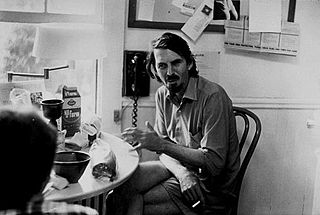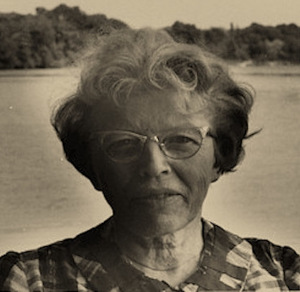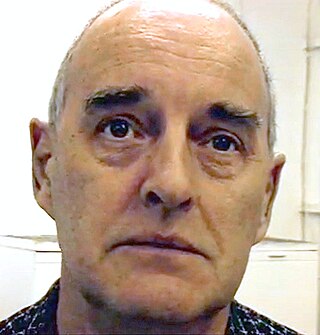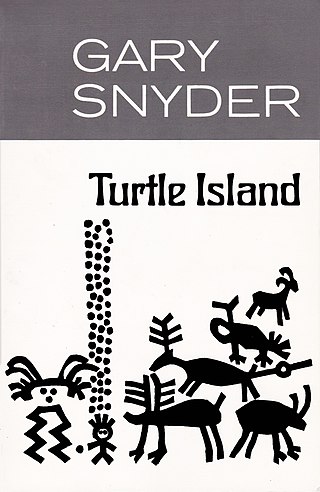Related Research Articles

Gary Snyder is an American poet, essayist, lecturer, and environmental activist. His early poetry has been associated with the Beat Generation and the San Francisco Renaissance and he has been described as the "poet laureate of Deep Ecology". Snyder is a winner of a Pulitzer Prize for Poetry and the American Book Award. His work, in his various roles, reflects an immersion in both Buddhist spirituality and nature. He has translated literature into English from ancient Chinese and modern Japanese. For many years, Snyder was an academic at the University of California, Davis, and for a time served as a member of the California Arts Council.

Robert White Creeley was an American poet and author of more than 60 books. He is associated with the Black Mountain poets, although his verse aesthetic diverged from that school. Creeley was close with Charles Olson, Robert Duncan, Allen Ginsberg, John Wieners and Ed Dorn.

Lorine Faith Niedecker was an American poet. Her poetry is known for its spareness, its focus on the natural landscapes of Wisconsin and the Upper Midwest, its philosophical materialism, its mise-en-page experimentation, and its surrealism. She is regarded as a major figure in the history of American regional poetry, the Objectivist poetic movement, and the mid-20th-century American poetic avant-garde.

Joanne Kyger was an American poet. The author of over 30 books of poetry and prose, Kyger was associated with the poets of the San Francisco Renaissance, the Beat Generation, Black Mountain, and the New York School.
Cid (Sidney) Corman was an American poet, translator and editor, most notably of Origin, who was a key figure in the history of American poetry in the second half of the 20th century.

The term San Francisco Renaissance is used as a global designation for a range of poetic activity centered on San Francisco, which brought it to prominence as a hub of the American poetry avant-garde in the 1950s. However, others felt this renaissance was a broader phenomenon and should be seen as also encompassing the visual and performing arts, philosophy, cross-cultural interests, and new social sensibilities.

Roy Fisher was an English poet and jazz pianist. His poetry shows an openness to both European and American modernist influences, whilst remaining grounded in the experience of living in the English Midlands. Fisher has experimented with a wide range of styles throughout his long career, largely working outside of the mainstream of post-war British poetry. He has been admired by poets and critics as diverse as Donald Davie, Eric Mottram, Marjorie Perloff, Sean O’Brien, Peter Robinson, Mario Petrucci and Gael Turnbull.
Gael Turnbull was a Scottish poet who was an important figure in the British Poetry Revival of the 1960s and 1970s.

Lee Harwood was an English poet associated with the British Poetry Revival.

Allen Fisher is a poet, painter, publisher, teacher and performer associated with the British Poetry Revival.

The New American Poetry 1945–1960 is a poetry anthology edited by Donald Allen and published in 1960. It aimed to pick out the "third generation" of American modernist poets, and included quite a number of poems fresh from the little magazines of the late 1950s. In the longer term it attained a classic status, with critical approval and continuing sales. It was reprinted in 1999. As of the anthology's 65th anniversary in 2025, Edward Field and Gary Snyder are the only contributors still living.
Theodore Vernon Enslin was an American poet associated with Cid Corman's Origin and press. He is widely regarded as one of the most musical of American avant-garde poets.
Clayton Eshleman was an American poet, translator and editor, noted in particular for his translations of César Vallejo and his studies of cave painting and the Paleolithic imagination. Eshleman's work has been awarded with the National Book Award for Translation, the Landon Translation prize from the Academy of American Poets (twice), a Guggenheim Fellowship in Poetry, two grants from the National Endowment for the Arts, and a Rockefeller Study Center residency in Bellagio, Italy, among other awards and honors.

Robin Francis Blaser was an American-born Canadian playwright, poet, and translator
Nationality words link to articles with information on the nation's poetry or literature.
The Berkeley Poetry Conference was an event in which individuals presented their views and poems in seminars, lectures, individual readings, and group readings at California Hall on the campus of the University of California, Berkeley during July 12–24, 1965.

Turtle Island is a book of poems and essays written by Gary Snyder and published by New Directions in 1974. The writings express Snyder's vision for humans to live in harmony with the earth and all its creatures. The book was awarded the Pulitzer Prize for Poetry in 1975. "Turtle Island" is a name for the continent of North America used by many Native American tribes.
A haiku in English is an English-language poem written in a form or style inspired by Japanese haiku. Like their Japanese counterpart, haiku in English are typically short poems and often reference the seasons, but the degree to which haiku in English implement specific elements of Japanese haiku, such as the arranging of 17 phonetic units in a 5–7–5 pattern, varies greatly.
Frank Samperi (1933–1991) was an American poet born in New York.
Fran Herndon was an American artist associated with the central poets of the San Francisco Renaissance. Trained at the California School of Fine Arts in print-making and painting, Herndon is known for her lithographs and collages, many of which were produced in tandem with Jack Spicer's poetry, and intended for joint viewing and reading. More recently, Herndon has branched out to work in drawing and pastels.
References
- 1 2 Robin Blaser (October 31, 2015). The Astonishment Tapes: Talks on Poetry and Autobiography with Robin Blaser and Friends. University of Alabama Press. p. 278. ISBN 978-0-8173-5809-9 . Retrieved December 15, 2015.
- ↑ "Shearsman Titles". Shearsman Books. Retrieved December 15, 2015.
- 1 2 3 Carlson, Michael. "Cid Corman/ Poet who was behind the literary magazine Origin", obituary in The Guardian , April 15, 2004
- ↑ Alan Golding (Winter 1990). "Little Magazines and Alternative Canons: The Example of Origin". American Literary History. 2 (4): 691–725. JSTOR 489925.
- ↑ This collection ultimately made up four online issues of the magazine which was released in 2007 and sixth series issues one and two